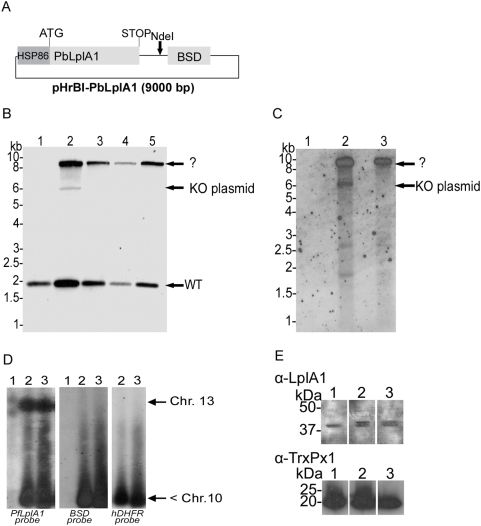Figure 4. Genotyping of the double transfection in P. falciparum with the targeting construct pHH1-LplA1-KO and the trans-species expression construct pHrBI-PbLplA1.
The expression plasmid was transfected into the P. falciparum line already carrying pHH1-LplA1-KO in cycle 0. A. Schematic representation of the plasmid pHrBI-PbLplA1 carrying the expression cassette of P. berghei LplA1 which is under the control of the PfHSP86 promoter. B. Genotyping of co-transfected parasite lines. Genomic DNA of wild-type (lane 1) and co-transfected parasites isolated after selection cycle 0 to 3 following transfection (lanes 2 to 5) was digested with NdeI, and the blot was probed with the PfLplA1 open reading frame. The blot showed the endogenous PfLplA1 gene specific band at 1.9 kb in lane 2 (cycle 0 after transfection). The pHH1-LplA1-KO plasmid (6 kb) was visible in cycle 0 (lane 2) and an additional DNA fragment was recognised by the probe, which is unrelated to any expected fragments. The P. falciparum LplA1 probe did not recognise the presence of the 9 kb pHrBI-PbLplA1 expression plasmid (see Supplementary Figure 2) but the signal on the blot is due to recombination of pHH1-LplA1-KO into an un-related gene locus. The 6 kb pHH1-LplA1-KO plasmid band disappears in lanes 3 to 5 while the ∼9 kb band is prominent in these parasite lines. C. Using a hDHFR probe it was established that the 9 kb band contains both P. falciparum LplA1 and the selectable marker suggesting that the plasmid had targeted a gene locus unrelated to PfLplA1. D. Analyses of the co-transfected parasite lines by PFGE supports that the pHH1-LplA1-KO plasmid had recombined with an unrelated gene locus (probe hDHFR, right panel). Reprobing the blot with the BSD probe (middle panel) that specifically recognises the pHrBI-PbLplA1 expression construct, showed that the expression plasmid was also present on a chromosome that was not resovled under the conditions of this PFGE. The PfLplA1 locus was recognised by the PfLplA1-specific probe (left panel). Lanes 1, wild-type; lanes 2, P. falciparum co-transfected with LplA1-KO and pHrBI-PbLplA1, cycle 0; lanes 3, P. falciparum co-transfected with LplA1-KO and pHrBI-PbLplA1, cycle 3. E. Expression of LplA1 protein in co-transfected parasites. The western blot shows parasite extracts that were isolated from wild-type (lane 1) and two independent P. falciparum lines co-transfected with pHH1-LplA1-KO and pHrBI-PbLplA1 (lanes 2 and 3) probed with a rabbit anti-P. falciparum LplA1 antibody at 1∶1000 dilution. The antibody detects one band in the wild-type parasite extracts that corresponds to the endogenous LplA1 protein. In the co-transfected parasite lines an additional protein is detected, which presumably corresponds to the P. berghei LplA1 protein expressed from pHrBI-PbLplA1. The blot was re-probed with a rabbit antibody raised against P. falciparum 1-Cys peroxiredoxin as a loading control.

